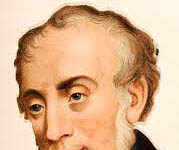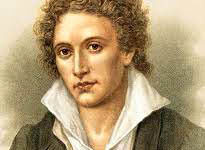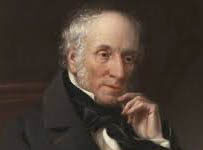The Reflection of the Spirit of Age in Literature
The Reflection of the Spirit of Age in Literature
Literature, like a skilled artist, weaves the threads of its narratives and characters into a vibrant fabric that mirrors the very essence of its age. Each literary epoch unfurls a distinct canvas, painting the attitudes, beliefs, and societal currents of its time. Just as a weaver carefully selects colors and patterns to create a mesmerizing cloth, authors meticulously craft their stories to capture the spirit of their era. Through characters, settings, and themes, literature mirrors the collective consciousness and prevailing sentiments, allowing us to peer into the heart of history.
Mirror of Societal Values and Norms: Literature serves as a reflective mirror that showcases the values and norms of a society during a particular period. Just as a shimmering lake mirrors the surrounding landscape, authors use their words to depict the prevailing morals, ethics, and ideals. In Jane Austen’s “Pride and Prejudice,” the societal emphasis on marriage as a means of securing social status and economic stability is mirrored in the characters’ pursuits and conversations. The characters’ actions and dialogues are like clear reflections, echoing the matrimonial aspirations that defined the Regency era.
Cultural Resonance and Shared Experiences: Like a melody echoing through time, literature captures the cultural resonance and shared experiences of an era. It is akin to a resonating chamber where the sounds of the past continue to reverberate. Take, for instance, F. Scott Fitzgerald’s “The Great Gatsby.” Set against the backdrop of the roaring twenties, the novel encapsulates the extravagance, disillusionment, and hedonism of the Jazz Age. Through lavish parties and the pursuit of the American Dream, Fitzgerald’s prose carries the palpable echoes of an era characterized by excess and social upheaval.
Reflection of Intellectual Movements: Literature acts as a vessel for intellectual currents, transporting the reader through the intellectual landscapes of a specific time. It is as if authors are architects of thought, constructing edifices of ideas that stand as testaments to the prevailing philosophies. In Mary Shelley’s “Frankenstein,” the novel embodies the intellectual inquiries of the Romantic era, exploring the boundaries of science and the consequences of unchecked ambition. Victor Frankenstein’s creation, a symbol of man’s attempt to harness the forces of nature, serves as a metaphor for the era’s fascination with both the wonders and dangers of progress.
Evolution of Language and Expression: Language is a dynamic force that evolves with each era, shaping and reshaping itself to capture the nuances of its time. Literature, in its mastery of language, becomes a time capsule of linguistic evolution. In the works of William Shakespeare, the Elizabethan era’s linguistic richness is evident through the Bard’s intricate wordplay, metaphors, and poetic rhythms. His creations, like intricate lacework, embody the linguistic artistry of the Renaissance period.
Sociopolitical Undercurrents and Commentary: Literature often functions as a silent observer, subtly commenting on the sociopolitical undercurrents of a given age. Like a skilled weaver who incorporates hidden symbols into their design, authors embed commentary within their narratives. George Orwell’s “1984” serves as a haunting tapestry woven with dystopian threads, reflecting the author’s concerns about totalitarianism and the erosion of individual freedoms during the mid-20th century.
Shifting Gender Dynamics and Roles: As societal perceptions of gender evolve, literature adapts to portray the changing dynamics and roles. Authors sketch portraits of their era’s evolving gender landscape with words that capture the complexities of identity. In Virginia Woolf’s “Mrs. Dalloway,” the stream-of-consciousness narrative technique reveals the inner thoughts and struggles of female characters, mirroring the emergence of feminist consciousness during the early 20th century. Woolf’s narrative brushstrokes mirror the dawning awareness of women’s agency and autonomy.
Emotional Landscapes and Human Experience: Literature weaves an emotional fabric that envelops readers in the human experience of a particular era. Just as a vibrant sunset paints the sky with a spectrum of hues, authors use their words to evoke emotions unique to their time. Charles Dickens’ “A Tale of Two Cities” immerses us in the emotional turbulence of the French Revolution, encapsulating the fervor, fear, and resilience that defined the period. Dickens’ eloquent descriptions create a tapestry of emotions, allowing readers to relive the tumultuous era through his characters’ lives.
Resonating Echoes Across Time: Literature, like an eternal echo, transcends its age to resonate with readers across generations. It becomes a bridge that connects the tapestries of various eras, fostering a timeless dialogue. Shakespeare’s “Romeo and Juliet” continues to captivate audiences with its exploration of love and feuding families, illustrating the universal themes of passion and conflict that endure through the ages. The play’s threads of emotion continue to weave connections between past and present.
In conclusion, the spirit of age in literature is a tapestry of intricate threads, a canvas where authors artfully blend history, culture, and humanity. Through characters, themes, and settings, literature captures the essence of its era, offering us a window into the thoughts, emotions, and aspirations that shaped its time. As readers, we become time travelers, traversing the landscapes of various epochs, guided by the guiding hands of authors who have painted their epochs with the colors of their words. 0 0 0.
The Reflection of the Spirit of Age in Literature
N.B. The article ‘The Reflection of the Spirit of Age in Literature’ originally belongs to the book ‘The Origin Evolution & Functions of Literature‘ by Menonim Menonimus. The Reflection of the Spirit of Age in Literature
Books of Literary Criticism by M. Menonimus:
- World Short Story Criticism
- World Poetry Criticism
- World Drama Criticism
- World Novel Criticism
- World Essay Criticism
- Indian English Poetry Criticism
- Indian English Poets and Poetry Chief Features
- Emily Dickinson’s Poetry-A Thematic Study
- Walt Whitman’s Poetry-A Thematic Study
- Critical Essays on English Poetry
- Tawfiq al-Hakim’s Novel: Return of the Spirit-An Analytical Study
- Tawfiq al-Hakim’s Novel: ‘Yawmiyyat Naib Fil Arayaf’-An Analytical Study
- Analytical Studies of Some Arabic Short Stories
- A Brief History of Arabic Literature: Pre-Islamic Period (500 AD-622 AD)
- A Brief History of Arabic Literature: Early Islamic Period (622 AD-661 AD)
- Reviews on William Shakespeare’s Works
- Reviews of Charles Dickens’ Works
- Reviews of John Milton’s Literary Works
- Reviews of Some Iconic Travelogues
- Shakespeare’s Sonnets-Critical Studies
- Analytical Studies of Selected Poems of Sarojini Naidu
- Analytical Studies of Selected Poems of Rabindranath Tagore
- Analytical Studies of Selected Indian English Poems
- Reviews of Selected Motivational Books
- Origin Evolution & Functions of Literature …
Additional Searches::
- The Functions of Literature
- Evolutionary Literary Study
- Functions of Literature
- Principles of Literature
- Literary Theory
- How Does Literature Reflect the Spirit of Age?
- Literature Reflects the Spirit of the Age











